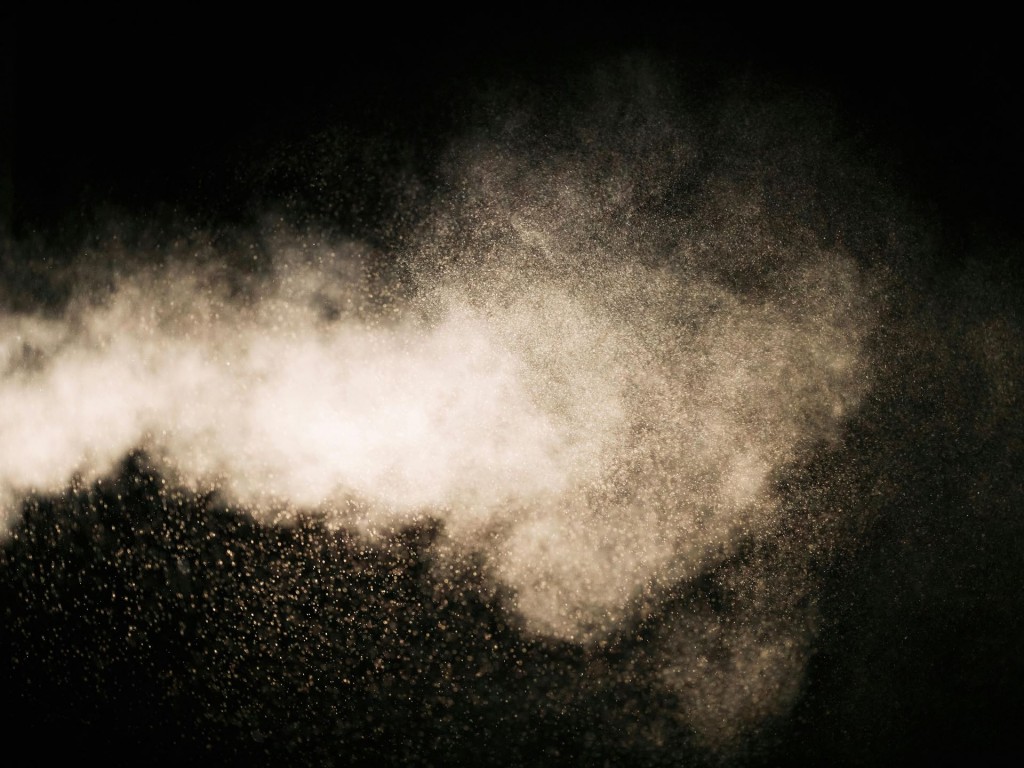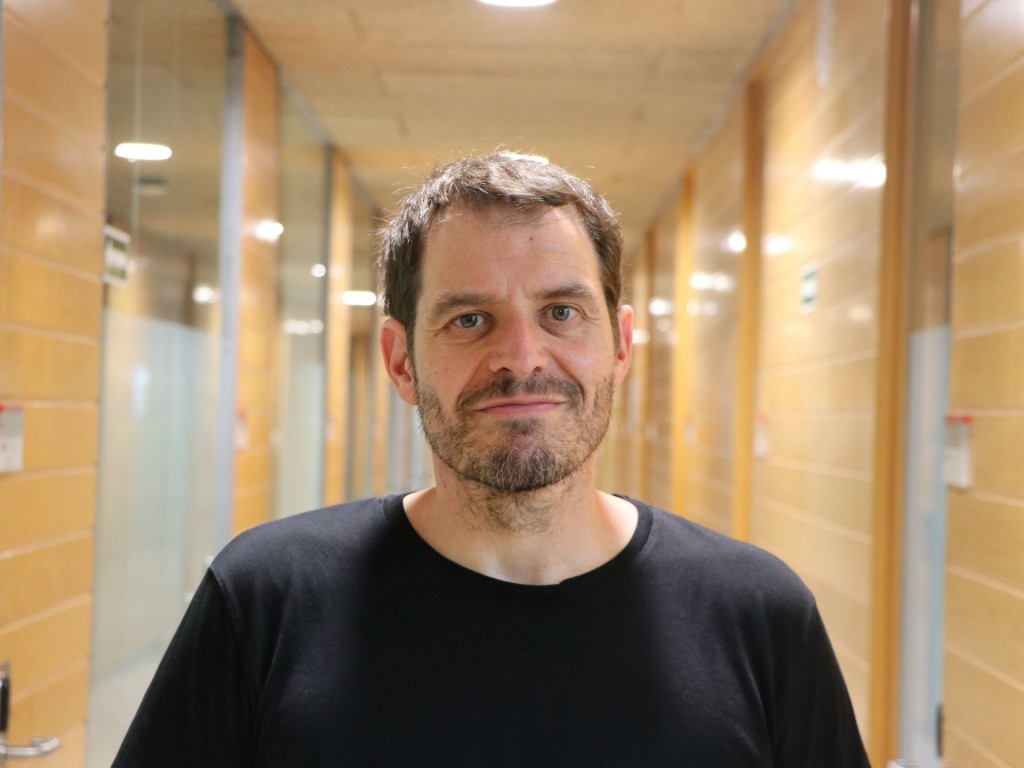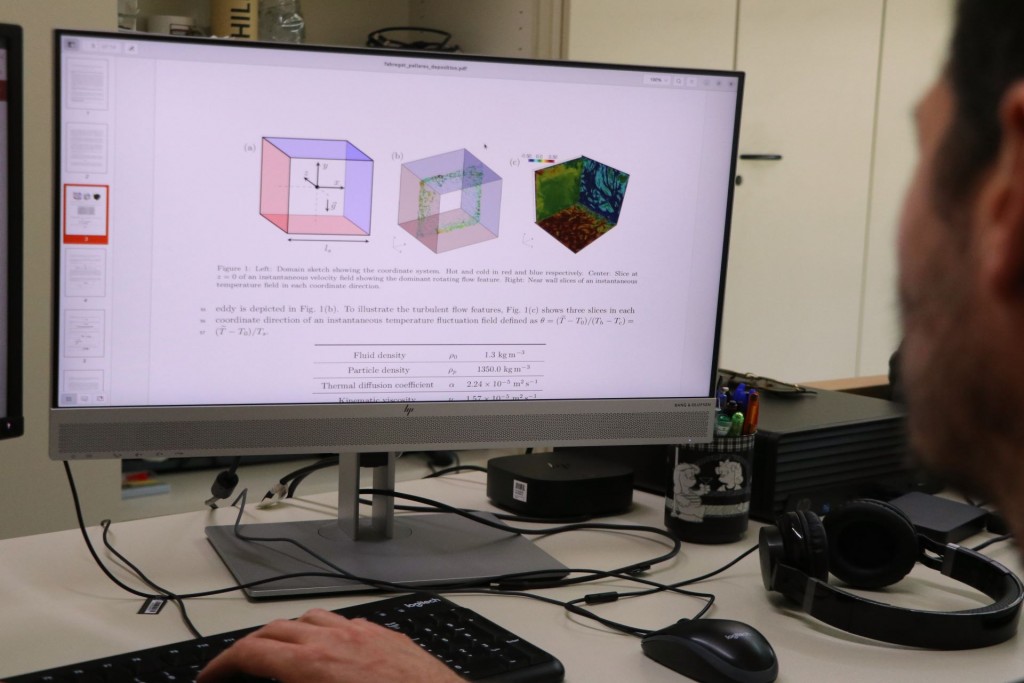10/07/2024
URV develops mathematical model that describes the dispersion of aerosols in indoor spaces
Researchers from the URV's Department of Mechanical Engineering simulate the behaviour of particle nuclei derived from violent respiratory episodes and determine their dispersion time in closed spaces

Researchers from the URV's Department of Mechanical Engineering simulate the behaviour of particle nuclei derived from violent respiratory episodes and determine their dispersion time in closed spaces
Coughs and sneezes are common symptoms of many respiratory diseases. When they occur, they generate a number of tiny particles that can carry pathogens from infected people and become an important vector of transmission. A research team from the URV’s Department of Mechanical Engineering has developed a mathematical model to determine the time it takes for an aerosol nucleus to disperse in a confined space, depending on its initial position. Given the high computational resources required for this type of study, the numerical simulations were carried out at the Barcelona Supercomputing Center. The results of the research represent a qualitative leap forward with respect to the methods currently used to simulate the behaviour of aerosols in indoor spaces.
The Experiments, Computation and Modelling in Fluid Mechanics and Turbulence (ECOMMFIT) research group at the URV has been studying for years the dispersion of aerosols through coughs and sneezes – also known as violent respiratory episodes – in confined spaces. In this new research they have observed how a number of suspended particles behave in a cubic room of nine square metres. “The dispersion of aerosol nuclei consists of two distinct stages,” explains Alexandre Fabregat, DEM researcher. First, the process is dominated by a jet-like flow, generated by the rapid expulsion of air due to the violent respiratory episode. Approximately two seconds later, the aerosols are dispersed, driven by the air currents specific to each location. These currents can be caused by natural phenomena, by the action of artificial ventilation devices or by temperature differences between a mass of air and the walls of an interior space.

In order to understand fluid motion in detail, researchers use computational models to solve the Navier-Stokes equations, combined with particle dispersion models. This approach differs from previous studies in that the movement of the fluid, that is, the air inside the room, is revealed in full detail, which allows researchers to determine very precisely the rate at which aerosols are dispersed within a confined space, depending on the location of the emission. However, providing such detail results requires great computational capacity. Consequently, the research team turned to the Barcelona Supercomputing Center, whose equipment they used for almost a month whilst carrying out the necessary calculations. “This enabled us to determine the speed, temperature and air pressure at any point in the room at any given moment,” says Fabregat, co-author of the research and member of the ECOMMFIT research group.
The calculations determined that the time it takes for an aerosol cloud to disperse completely throughout the entire volume of a room varies according to its proximity to the ceiling and walls. In their case study they looked at a cubic room of nine square metres and found that if the cloud is in the centre of the room, it takes up to five minutes to disperse fully, whereas if it is near the walls, it takes three minutes. “In our particular study, this is caused by temperature differences between the walls and the mass of air; that is, when the air touches the walls and cools down, its density increases, which in turn generates air currents”, explains Fabregat.

The methodology developed by the ECOMMFIT research group is useful for understanding the dispersion of aerosols in confined spaces in a precise way, without simplifying the conditions. This knowledge can be used to help design rooms, equipment and ventilation systems that minimise the transmission of airborne pathogens in particularly sensitive areas, such as schools, hospitals, residences and laboratories.
Reference: Lavrinenko, A., Fabregat, A., Gisbert, F., & Pallares, J. (2024). Direct numerical simulation of pathogen-laden aerosol dispersion in buoyancy-driven turbulent flow within confined spaces. International Communications in Heat and Mass Transfer, 152, 107272. https://doi.org/10.1016/j.icheatmasstransfer.2024.107272
